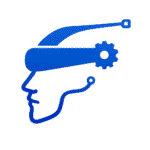Introduction
Ever wondered how to get Sharingan eyes without being part of the Naruto universe? With computer vision and artificial intelligence, you can do just that—digitally! In this guide, we’ll explore how to create a simple model that detects your iris and overlays Sharingan eye images in real-time.
This project is perfect for anime fans and beginners interested in AI. We’ll walk you through the dataset, model training, and implementation process, step-by-step. Let’s dive in!
Table of Contents
1. What Are Sharingan Eyes?
2. Dataset Overview and Setup
3. Training the YOLO v8 Model
4. Integrating the Trained Model
5. Running the Final Code
1. What Are Sharingan Eyes?
Sharingan eyes are a unique type of visual ability from the anime Naruto. These mystical eyes grant their users incredible powers, each with a distinct design and function. While we won’t develop real Sharingan powers, we can create a fun digital simulation using AI!
2. Dataset Overview and Setup
To create Sharingan eyes, we need a dataset to train our model. For this, we’ll use Roboflow, a popular platform offering pre-annotated datasets compatible with YOLO (You Only Look Once) models.
Here’s how to set up the dataset:
• Visit Roboflow and select a dataset for iris detection.
• Choose the YOLO v8 format and copy the code to load the dataset directly into your Google Colab environment.
• Linking the dataset directly avoids the hassle of manual downloads.
Steps to Prepare the Dataset:
1. Open Google Colab and connect to a T4 GPU for faster training.
2. Link Google Drive to your Colab notebook to save the dataset and trained models.
3. Use the Roboflow API to load the dataset into your Colab environment.
4. Modify the dataset’s YAML file to specify paths for train, test, and validation images.
3. Training the YOLO v8 Model
YOLO v8 is known for its simplicity and efficiency. Here’s how you can train your Sharingan model:
1. Install required libraries, like ultralytics and roboflow.
2. Load the dataset by pasting the API code from Roboflow.
3. Configure the training code:
• Use YOLO v8n (a lightweight model) to reduce training time.
• Train the model for 50 epochs with an image size of 256 pixels and a batch size of 4.
4. Start training. It may take up to an hour with a T4 GPU.
After training, a runs folder will be created. Inside this folder, you’ll find the trained model weights, including best.pt, which we’ll use for implementation.
4. Integrating the Trained Model
Now that we have a trained model, let’s integrate it into our Python code.
What You’ll Need:
• Sharingan Images: A folder with 11 Sharingan designs and one Sage Mode eye image.
• Audio Effects: Optional sound effects to enhance the experience.
• requirements.txt: A file listing all necessary libraries.
Setting Up the Environment:
1. Create a virtual environment:
conda create --name sharingan python=3.x conda activate sharingan 2. Install dependencies:
pip install -r requirements.txt 3. Copy the trained model (best.pt) and assets into the project folder.
5. Running the Final Code
With everything set up, running the code is simple:
1. Open your terminal and activate the virtual environment.
2. Run the Python script:
python sharingan.py 3. A real-time video window will appear, transforming your eyes into Sharingan designs!
The code is available on GitHub (Checkout YouTube video to get the link in description), along with the required Sharingan images and audio files. Feel free to experiment and customize it to your liking!
Summary
This blog explained how to create a fun AI project that overlays Sharingan eyes on your video feed using YOLO v8, Google Colab, and Roboflow. You learned how to set up the dataset, train the model, and implement it in Python. Now it’s your turn to give it a try!
FAQs
1. What is YOLO v8?
YOLO v8 is a popular object detection model known for its speed and accuracy. It’s often used for tasks like image and video analysis.
2. Can I use a different dataset?
Yes, you can use any dataset suitable for iris detection. Just ensure it’s compatible with YOLO.
3. Do I need a GPU for this project?
While not mandatory, using a GPU significantly speeds up the training process. Google Colab provides free access to GPUs like the T4.
4. Where can I find the project files?
All files, including the Sharingan images and code, are available on the GitHub link mentioned in the project description (YouTube).
Thanks for your time! Support us by sharing this article and explore more AI videos on our YouTube channel – Simplify AI.


Leave a Reply